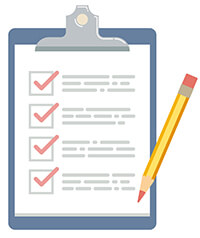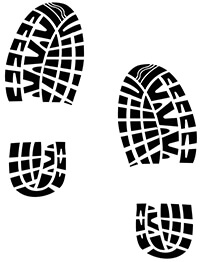When is the right time to market features or benefits?
It all starts with the question, “How should I sell my product?”
Typically, many marketers start organizing a product into two broad sales categories: a list of features, or how your product functions, and a list of benefits, or how it speaks to your customer base. If you have a good idea of your customer and why your product helps them, the benefits are likely speaking directly to them.
Despite the clarity driven by this process, we often find ourselves wondering what should come first: features or benefits?
If you are in an organization, this can become a messy process because different viewpoints of the customer journey can result in a discombobulated message.
If you are solo-marketing, it can become disconnected because we challenge our assumptions as new campaigns or goals arrive and our perception of the product changes.
The good news is that the answer for the “right time” does exist, and like most activities in marketing, it depends on your product and customer.
If you follow the steps below, you will find that your message will line up with your customer’s expectations and ultimately raise your conversion rate.
Make sure you understand your customer
This may come across as elementary, but people often do not take the time to narrow down the demographics and details of their target market. You will want to be as specific as possible and eventually develop a persona.
Good details in a persona are data sets like age, profession, family status, geography, interests, and personality. Hone in on your customers’ goals and how your product can help them, and list their pain points and how your product can cure them.
Good personas also find a representative picture of your target market so you — and your co-workers — can effectively relate to the customer.
 Organize your features and benefits
Organize your features and benefits
Once you have a good idea of your customer profile, you can start organizing your features and benefits list.
Starting With Features:
Depending on the product, you may have to do different levels of research to find features. If you have a software product, make sure you are well versed in its capabilities (unless you built it yourself) and talk to your engineering team. If it’s a physical product, you will want to think about its properties that you promised your customer will cure their issues .
It’s important to think about “features” in the way your customer sees them. For example, if a feature of a software program is automatic appointment reminders, call it what your customers might think it is. Stay away from names that are unclear, such as “magic calendar app” or “Sync Magic.” When you are describing features, you want the bare bones (unless, of course, your product is a novel concept); let the marketing speak for the brand itself.
Benefits Research:
Benefits are a factor of understanding your customer’s goals and frustrations. You want to think about how your product’s features can enable change in their lives. Tie them directly to your goals and frustrations, and find the emotional trigger words that are common for the pain points or goals you established.
When deciding your benefits, you want to aim for outcome-driven language. For example, if your product helps with preventing hair loss, say something like, “Restore your hair in six weeks,” or “Have your hair remember when it was 18.” Be sensitive to claims you make, and be sure to fulfill them, of course!
Prioritize your features and benefits
Nearly every product has one or two strong traits or features that truly make a difference to a customer. Our goal is to identify those and tie them to benefits, so our message is consistent across all channels.
You can determine this by doing customer surveys, investigating your own product, or watching your competitors. More than likely, however, you will find that customers use your product in bulk to solve a problem.
So, make a list and prioritize which of your features should show up first in your marketing — and make a list of which benefits those features enable.
Build your customer journey
 Now that you have a prioritized list of features and benefits, we are almost ready to figure out timing, but we need to first identify the customer journey so we know the right timing to market these messages.
Now that you have a prioritized list of features and benefits, we are almost ready to figure out timing, but we need to first identify the customer journey so we know the right timing to market these messages.
Building a customer journey can start simple, but you want to think of the mental and physical steps a user must take to make a purchase. Customer journeys also include potential entrance points to a system of messaging.
In the figure above, Janey (our fun customer) has a need and a goal to get a vacuum now that her house is dirty. Now, assuming that Janey is uneducated in vacuums, her first step in her journey is finding a solution to her problem.
When she starts her search, Janey will arrive at certain questions: “What vacuum is best for carpets? Do I want something that helps with allergies? Is it easy to handle?”. Ultimately, once she finds the answer that best fits her goal, Janey will make a purchase.
Decide when your customer is trying to solve a problem, and when they’re looking to validate your solution
This is the key idea when deciding to use features or benefits messaging.
When speaking to a prospect, this is the general order of events:
The prospect identifies they have a need. —> They look for a solution to their problem. —> They want to know the solution works. —> They buy the solution.
In other words: the customer is saying, “Show me that you understand my problem.” —> “Show me how you can solve my problem.” —> “Remind me how your solution provides me value.”
If we factor it, we get: Benefits —> Features —> Benefits / Features.
Let’s apply this condition to the situation where Janey is buying a vacuum.
In the diagram above, we realize that Janey needs to know that her problems are recognized, independent of the features. This often happens through independent research — generally content lists, friends, or other resources. However, if you are prepared to answer the question that Janey has, you have an opportunity to build trust with Janey early in her search for a vacuum.
Once Janey is confident that she knows what solutions can solve her problem, she actively looks for qualifying features.
Note: If you know your customer is searching for specific terms that require education, such as HEPA filters, they are LOOKING for features. So, if you are using search ads or organic search, realize that you probably want to address their feature-based needs.
Finally, once Janey is confident that the product she found matches her needs — and believes the features will work — Janey will likely make the next step of purchasing.
As you can see, you want to understand your market if you want market benefits.
Understand and classify your inbound marketing channels
The easiest way to systemize your features/benefits matching is to pair them to channels. As mentioned earlier, you want to understand the previous steps in your customer journey. Here are a few examples:
Organic Search with specific keywords —> If the queries are specific and technical, it’s likely your customer is qualifying based on features. Benefits language takes a second priority.
Organic Search with broad keywords —> If someone is discovering why they should do something, they will often search broad terms, such as “solutions for accounting automation,” because they do not understand what features actually make an impact.
Hopefully, this helps frame a loose outline of when you should market and how. Keep researching and understanding your market, and build the best model you can.
If you have any comments or questions, please leave them below!